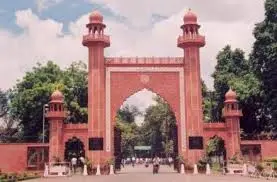Madrastul Uloom: The AMU’s precursor counts Manto, Khwaja Abbas, Javed Akhtar, Lala Amarnath among its alumni

Madrastul Uloom, the pioneering educational institution that preceded Aligarh Muslim University (AMU), stands as a beacon of intellectual and cultural awakening in India. Established in the late 19th century, it was more than just a school; it was a movement aiming to blend traditional Islamic education with modern academic disciplines. This unique approach laid the foundation for AMU and shaped some of the most influential figures in Indian literature, cinema, and sports.
Origins and Vision of Madrastul Uloom
Madrastul Uloom began with a clear mission: to provide quality education to Muslim youth while preserving their cultural identity. Its founders wanted to prepare students for the modern world without sacrificing their heritage. This balance made the institution appealing to families who valued both tradition and progress.
The school soon gained a reputation for its rigorous curriculum and its openness to new ideas. It encouraged critical thinking and creativity alongside religious and classical studies. This blend helped produce well-rounded individuals who were ready to lead change in various fields.
Eventually, Madrastul Uloom evolved into Aligarh Muslim University, officially established in 1920. AMU expanded on the original mission, offering a wide range of courses and becoming a center for higher learning that attracted students from all over the subcontinent.
Distinguished Alumni Who Shaped India’s Cultural Landscape
Madrastul Uloom’s legacy is best seen in the achievements of its alumni. These individuals brought new ideas and creativity to their professions, often pushing boundaries and addressing important social issues. Here are some of the most notable graduates:
- Saadat Hasan Manto
Manto stands out as one of Urdu literature’s most powerful voices. He wrote with brutal honesty about the horrors of partition and human nature’s darker sides. His short stories do not shy away from uncomfortable truths, making readers reflect deeply on society. Manto’s fearless storytelling continues to inspire writers worldwide, proving the lasting impact of Madrastul Uloom’s nurturing environment. - Khwaja Ahmad Abbas
A prolific writer and filmmaker, Khwaja Ahmad Abbas used his art to highlight social injustice. His work often focused on the struggles of the poor and marginalized. Abbas believed cinema and literature should serve as tools for social reform. Through his impactful scripts and journalism, he became a leading figure in progressive Indian thought. - Javed Akhtar
Javed Akhtar’s influence in Indian cinema spans decades. As a poet, lyricist, and screenwriter, he blends art and activism. His lyrics often carry powerful messages about equality and human rights. Akhtar’s ability to connect with audiences and raise social awareness through his craft makes him a true modern-day icon. - Lala Amarnath
In the world of sports, Lala Amarnath made history as the first Indian cricketer to score a Test century after India gained independence. His achievements helped popularize cricket across the country. Amarnath was known for his skill and leadership, inspiring future generations of athletes.
Madrastul Uloom’s Lasting Influence
The variety of fields in which Madrastul Uloom alumni excelled shows the institution’s broad impact. Literature, cinema, and sports are just a few examples. The school’s emphasis on a balanced education empowered students to think independently and engage with the world critically.
By fostering talent that crossed boundaries, Madrastul Uloom helped shape modern India’s intellectual and cultural identity. Its transformation into AMU expanded this legacy further, making it a vital hub for education and social progress.
Even today, AMU carries the torch started by Madrastul Uloom. The university remains committed to combining tradition with innovation, preparing students to face contemporary challenges with confidence and wisdom.
Why Madrastul Uloom Matters Today
Understanding Madrastul Uloom helps us appreciate the roots of modern Indian education, especially for minority communities. It shows how education can be a powerful tool for empowerment and change.
The institution’s success in nurturing leaders like Manto, Abbas, Akhtar, and Amarnath proves that education is not just about academics. It also builds character, courage, and creativity. These qualities remain essential as India continues to grow and evolve.
In today’s fast-changing world, the balance Madrastul Uloom struck between heritage and progress offers valuable lessons. It reminds us that preserving culture and embracing modernity can go hand in hand.
Conclusion
Madrastul Uloom’s story is a testament to the transformative power of education. Its alumni have shaped literature, cinema, sports, and social thought in profound ways. As the precursor to Aligarh Muslim University, it laid the groundwork for an institution that continues to inspire and educate thousands.
The lives and achievements of its graduates like Saadat Hasan Manto, Khwaja Ahmad Abbas, Javed Akhtar, and Lala Amarnath celebrate the enduring legacy of Madrastul Uloom. Their work reminds us how education can spark creativity, drive social change, and leave a lasting impact on society.






